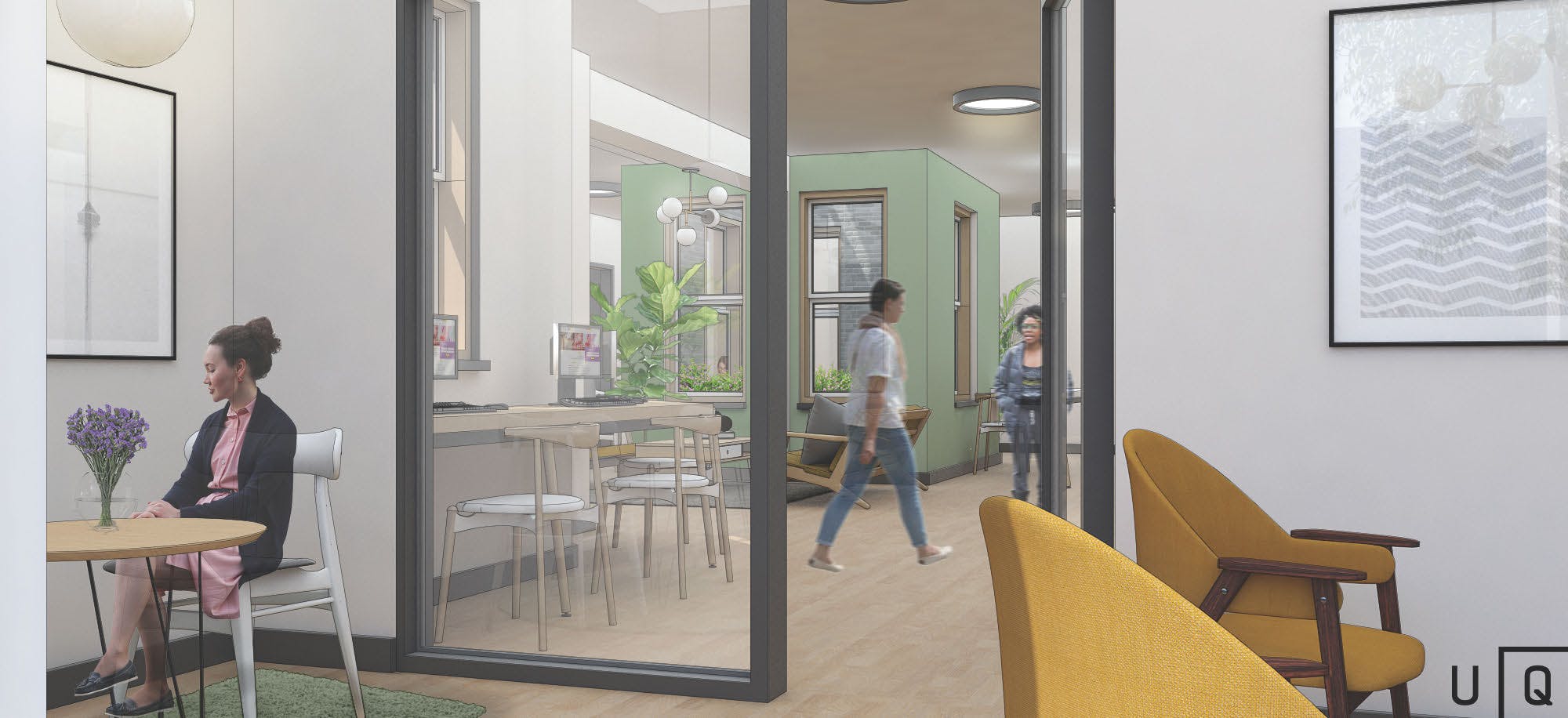The New York State Office of Mental Health (OMH) recently put out an RFP for a capital grant to build out a new crisis respite center focused on individuals with intensive needs. These crisis respite centers are an innovative service model in a residential setting that provide an alternative to hospitalization for people experiencing emotional crises. Currently, there are only four of these facilities throughout New York City which provide temporary housing for individuals who are primarily independent. Working with mental health service provider and non-profit developer Services for the Underserved (S:US), the firm prepared a design proposal for OMH's new Intensive Crisis Program to be located in a three story + basement existing building in the Bedford Stuyvesant section of Brooklyn. The existing building is currently owned by S:US and was once two separate rowhouses that were combined in the early 1990s.
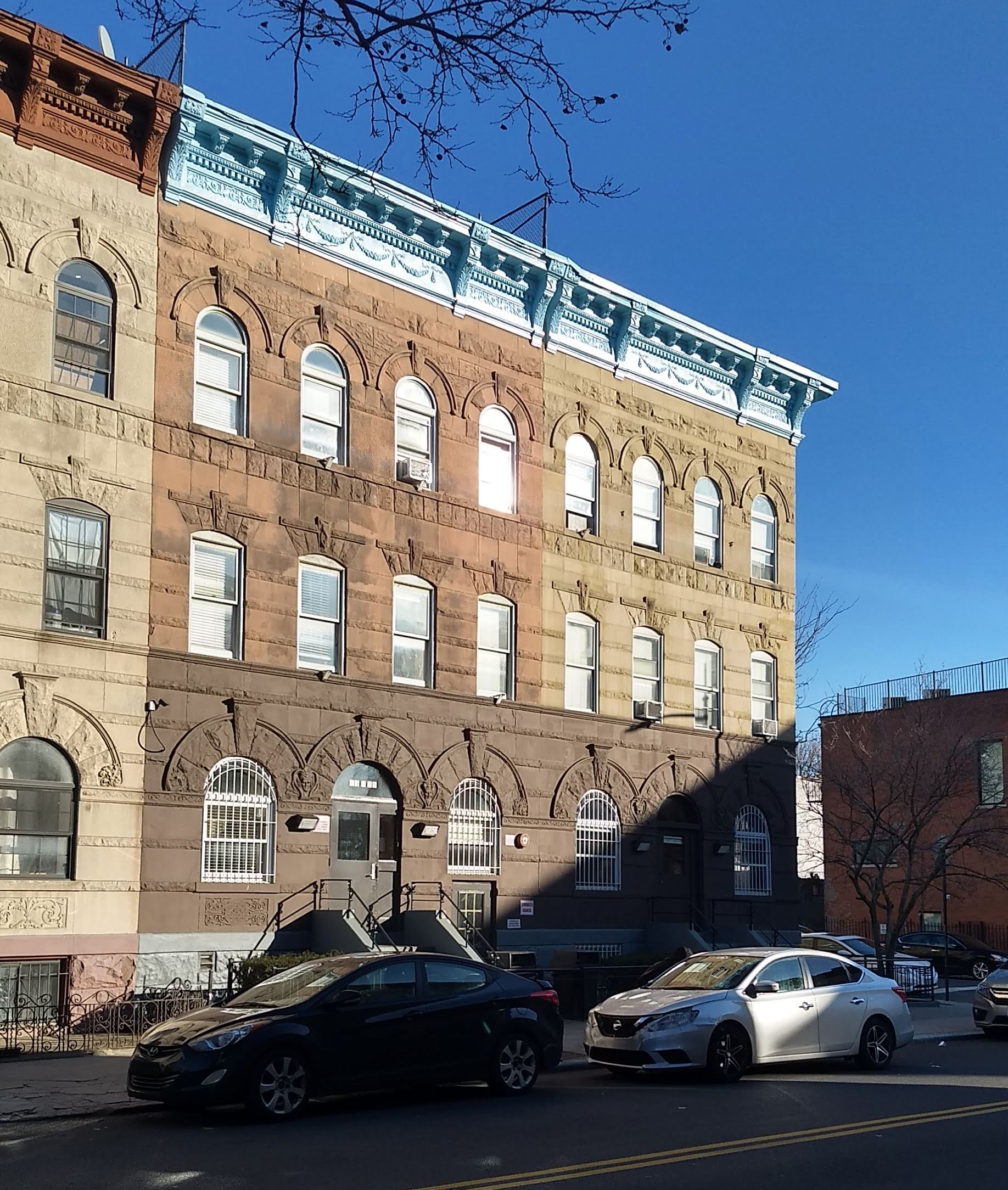
For the residential floors, the main design concept is to open up the floor plate by removing rooms at the interior of the plan which make the space feel cramped and claustrophobic.
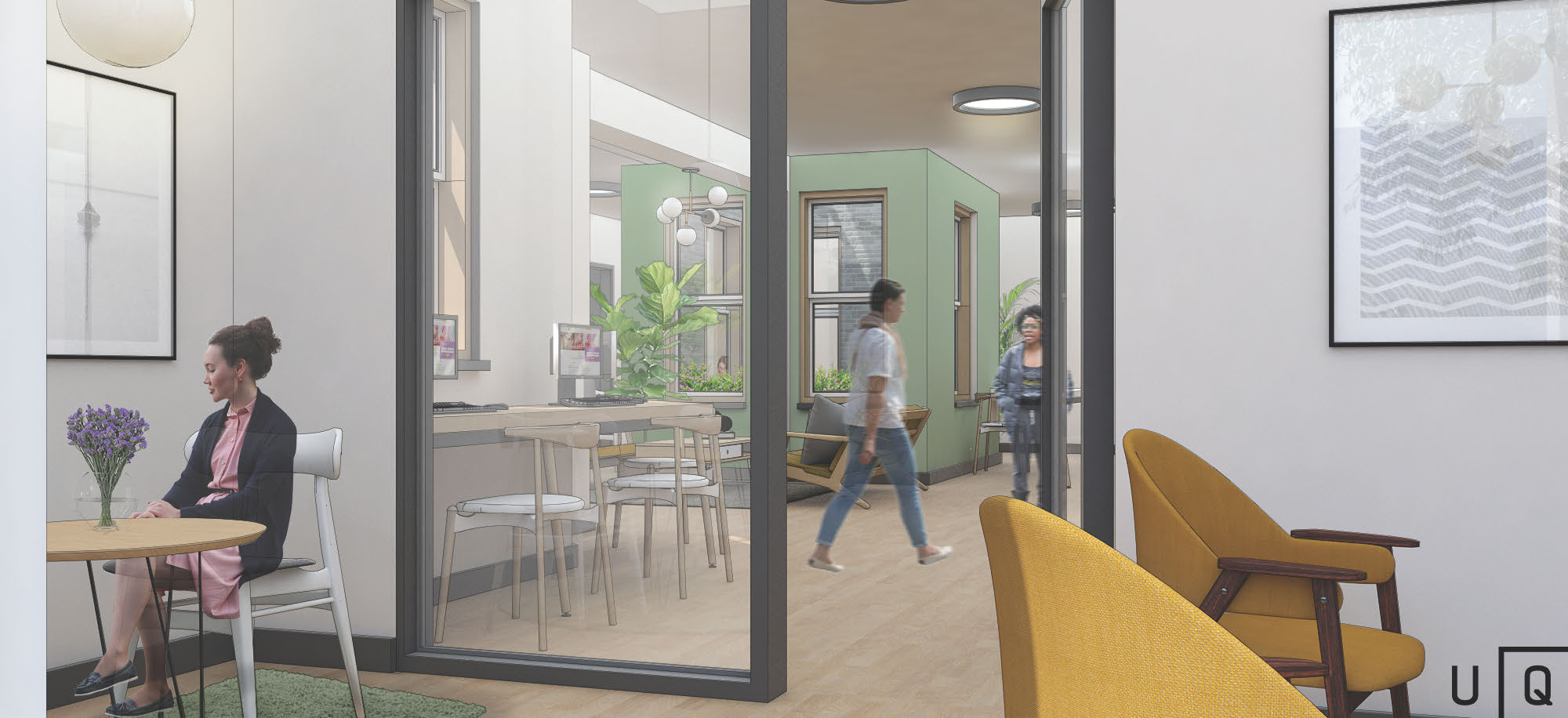
Because the building was once two separate old code rowhouses, there is a small internal court or light well at the center of the plan that is hidden. By removing the two rooms that were getting light and air from this small shaft, this light well can be exposed and made a central design feature that opens up the circulation, creates better visibility across the floor, and creates a central space that can be furnished as a common lounge.
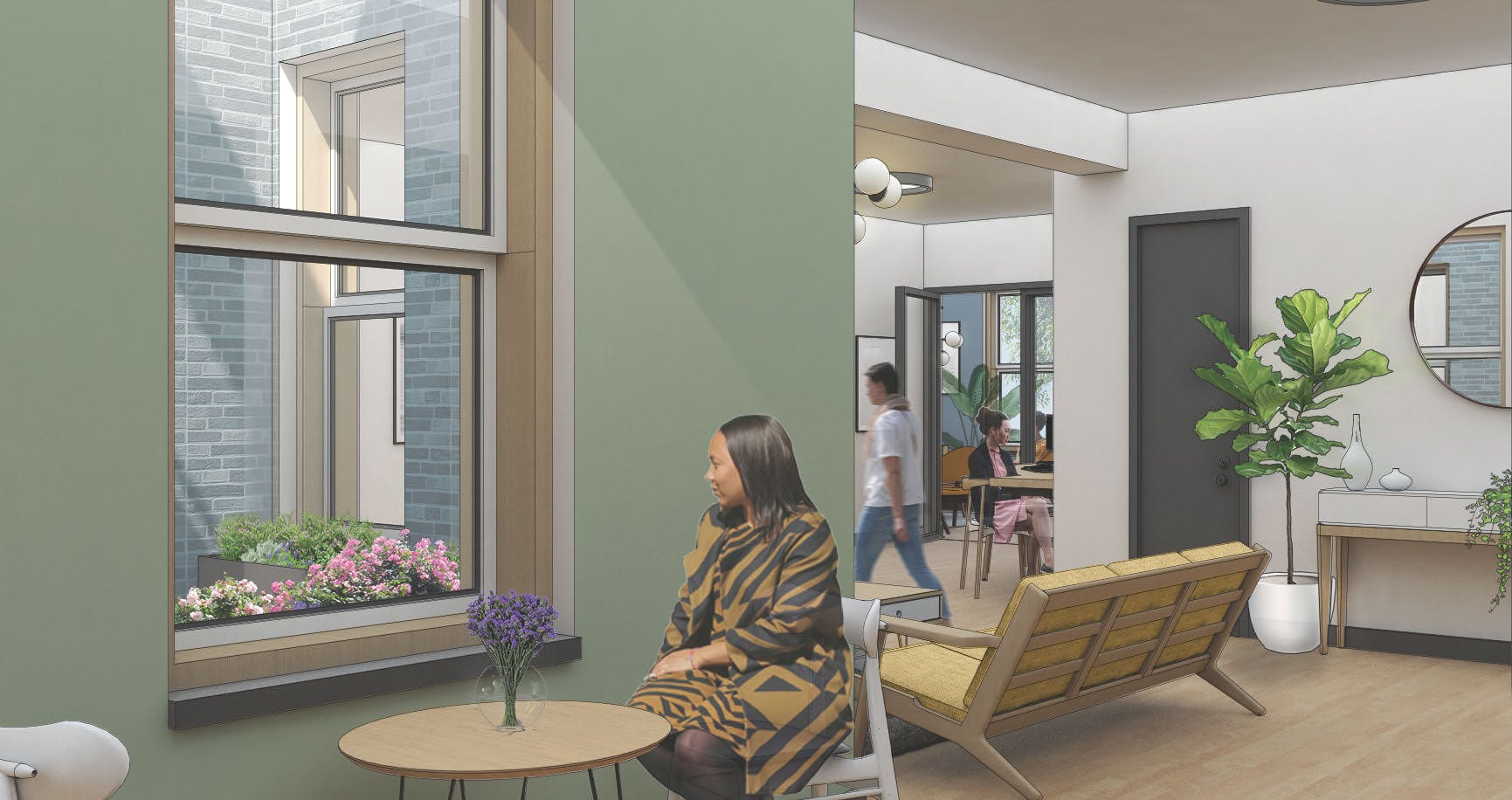
By adding comfortable furniture, plants, warm lighting, and color, this central space creates a more home-like environment for residents. The proposal includes painting the exterior wall of the light well and enlarging the windows with built-in niches for seating and/or interior décor. On the intensive crisis floor, the creation of this open central space has the added benefit of creating more visibility for the peer counselors, whose desk spaces have been distributed around the floor plan

Intensive Crisis Residential Floor Plan
On the first floor, the relocated reception area and the larger waiting area/intake lounge make for a more welcoming entry – especially for residents coming here for the first time. This lounge would have comfortable furniture and might also include artwork and library shelves with books. Along with a few side tables, warm accent lighting, rugs, and plants the lounge would help to minimize any institutional feel.
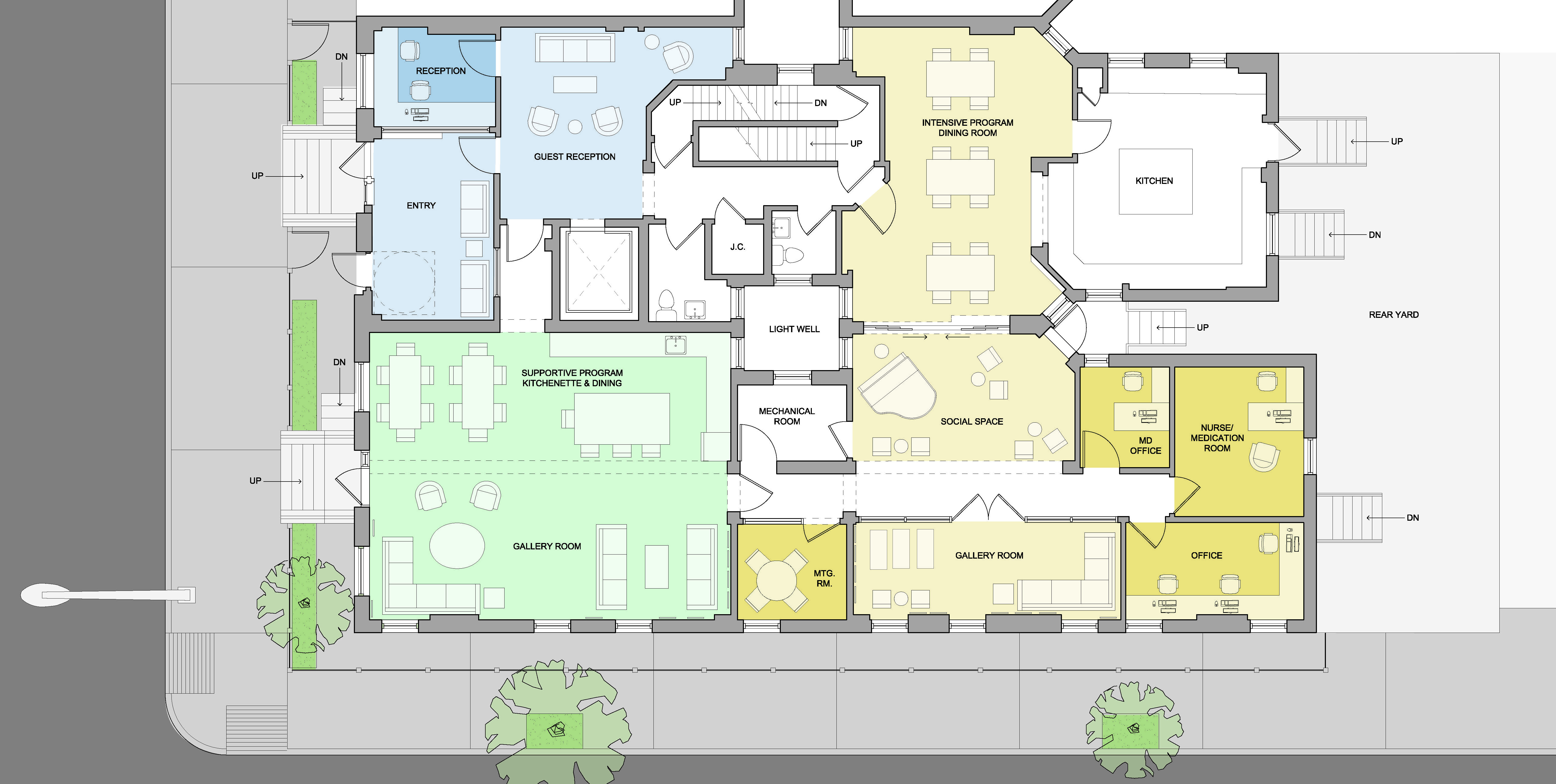
Crisis Respite Entry & Ground Floor Plan
The proposal also includes outdoor seating and large planter beds for the outdoor patio. By providing some cost-effective amenities, this underutilized space would become more inviting and able to host to a variety of uses – from simply reading a newspaper outdoors to informal gatherings to therapeutic gardening.
